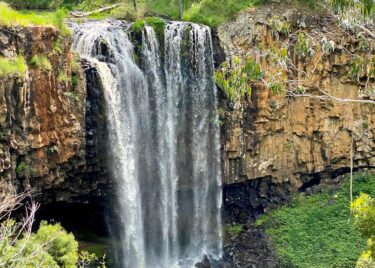Share this article
What we must do now to improve biodiversity and community-outcomes
The latest State of the Environment (SoE) report makes for sobering reading. The report finds that the state and trend of the environment in Australia is poor and deteriorating, exacerbated by climate change, habitat loss, pollution, resources extraction, and invasive species.
In the past two centuries, Australia has lost more mammals to extinction than any other continent.
Nearly 300,000 hectares of primary forest has been cleared between 2015 and 2019, and a larger area still of sparsely vegetated or non-woody vegetation cleared and converted for other uses such as pasture and grazing. The impact of the devastating 2019-20 bushfires on native flora and fauna was catastrophic and the full repercussions will only become evident in the coming years.
The results of this report card on the management of our natural environment is confronting.
It is also the wake-up call that Australia needs.
The release of the State of the Environment Report presents an opportunity to refocus, prioritise and move forward. We need to rise to the challenge and shift this destructive trajectory to a more positive one.
The positives we can take from the latest State of the Environment (SoE) report?
Incorporating Indigenous Voice
On the bright side, for the first time we have seen the inclusion and recognition of Indigenous voice and expertise, as “essential for meeting the environmental challenges of today and the future” (Minister Plibersek, National Press Club 19 July 2022). The State of the Environment Report is co-chaired and every chapter co-authored by First Nations scientists. It is also the first time the SoE Report has comprehensively outlined the links between the environment and human well-being.
What is needed now, is action to embed the recognition of Indigenous voice and wisdom, into practice. Organisations such as the Aboriginal Carbon Foundation, offer solutions, such as a mechanism to upscale cultural burning, that Australia has barely begun to tap into. It is critical that we harness every opportunity at our disposal to change course.
There are other reasons to be optimistic for the future of the environment.
Increasing awareness and regulation for Corporates
Corporates and financial institutions will continue to bring focus to how their activities (operations or financial investments) positively or negatively impact on natural capital and biodiversity. This is in response to increased regulatory oversight, social or economic responsibility as shareholders, investors, and other organisations up and down the supply chain scrutinising their exposure.
Climate and biodiversity litigation is on the rise. The Taskforce on Nature-related Financial Disclosures is now in its second round of consultation and one step closer to implementation. Standardised means for measuring and accounting for changes in the environment, backed by science such as the Accounting for Nature framework, continue to mature and gain global recognition.
Benefits of carbon offsets as nature-based solutions
In addition, we are witnessing substantial increases in global (and local) financial investment flows toward nature-based solutions, in recognition of the opportunities for addressing the twin crises of climate change and biodiversity loss.
As our fellow industry peers at Pollination point out, the carbon offset market is attracting this investment because it represents an existing, functioning mechanism that can make a material contribution toward reversing environmental loss.
At Anthesos, we are witnessing increasing and sustained interest from businesses who are seeking support to help identify, evaluate, develop or implement land-based carbon offset projects under the Emissions Reduction Fund (ERF), in order to self-generate high-quality and robust carbon offset credits. We’ve explored how to do this here: How to Self-Generate Carbon Credits – Building an Offsets Strategy and Land-based Carbon Offsets – from Strategy to Implementation.
We acknowledge that this system is not perfect and welcome the recently announced review, led by former Australian Chief Scientist Professor Ian Chubb, as an opportunity to strengthen and restore trust in the scheme. We also acknowledge that the current rates of land clearing need to be significantly stemmed, for which adequate and appropriate regulation is required, so that carbon offset projects are not merely putting back what is being taken out.
However, from our experience, a great deal of positive land stewardship outcomes, for the benefit of biodiversity and local communities, can be achieved through well-designed land-based carbon offset projects.
This of course depends on how these projects are developed.
- They must be robust and verifiable, and connected with the local community.
- They must start with an acknowledgment of corporate values and responsibilities towards biodiversity and social outcomes.
- They must recognise how carbon offsets fit into the broader corporate emissions reduction strategy.
- They must be implemented and managed responsibly and remain true to this spirit.
Well-designed carbon offset projects have the potential to be powerful nature-based tools in the fight against continued land clearing, species decline and climate change.
This is an evolving space, but we need to be implementing actionable solutions now to combat the years of neglect, mismanagement and damage to our environment.
We firmly believe carbon offset markets present an existing conduit to incentivise best practice land stewardship and start the important work of reversing decades of land clearing, restoring our native habitats and protecting our threatened species.

So although the State of the Environment report is damming, as we’ve outlined, it’s not the final verdict. There are positive shifts and awareness and momentum building to protect biodiversity and implement nature-based solutions. As the report states:
We need to embrace an all-in effort, increase action now and leverage the mechanisms and frameworks at our disposal.
Want to learn more about nature-based solutions or carbon offset projects?
We are established carbon market advisors and can provide further guidance on carbon abatement estimates and eligibility due diligence, economic analysis, project implementation and other strategic advisory support. Reach out to us for advice on building an offsets strategy or eligibility of a property for implementing a carbon project.
